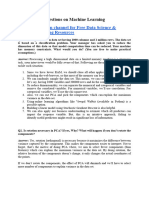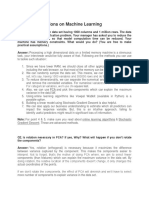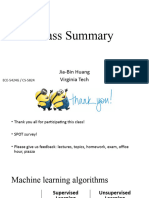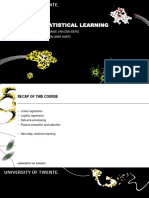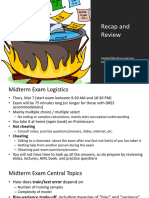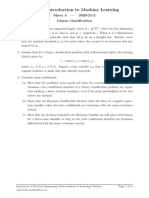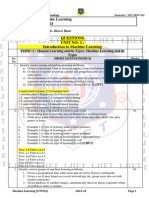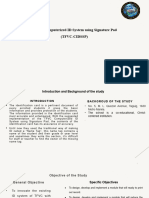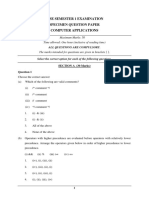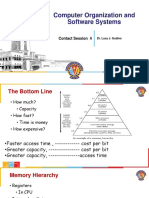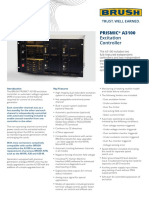0% found this document useful (0 votes)
25 views3 pagesModel Paper - Applied Machine Learning
The document is an exam paper for an Applied Machine Learning course, consisting of three questions that cover topics such as Naive Bayesian classifiers, model evaluation methods, overfitting in regression models, and the application of Support Vector Machines for predicting loan defaults. Each question requires detailed explanations, reasoning, and analysis of various machine learning concepts and techniques. The exam assesses the understanding of classification, model complexity, data preprocessing, and performance metrics in machine learning.
Uploaded by
usanduni36Copyright
© © All Rights Reserved
We take content rights seriously. If you suspect this is your content, claim it here.
Available Formats
Download as PDF, TXT or read online on Scribd
0% found this document useful (0 votes)
25 views3 pagesModel Paper - Applied Machine Learning
The document is an exam paper for an Applied Machine Learning course, consisting of three questions that cover topics such as Naive Bayesian classifiers, model evaluation methods, overfitting in regression models, and the application of Support Vector Machines for predicting loan defaults. Each question requires detailed explanations, reasoning, and analysis of various machine learning concepts and techniques. The exam assesses the understanding of classification, model complexity, data preprocessing, and performance metrics in machine learning.
Uploaded by
usanduni36Copyright
© © All Rights Reserved
We take content rights seriously. If you suspect this is your content, claim it here.
Available Formats
Download as PDF, TXT or read online on Scribd
/ 3

